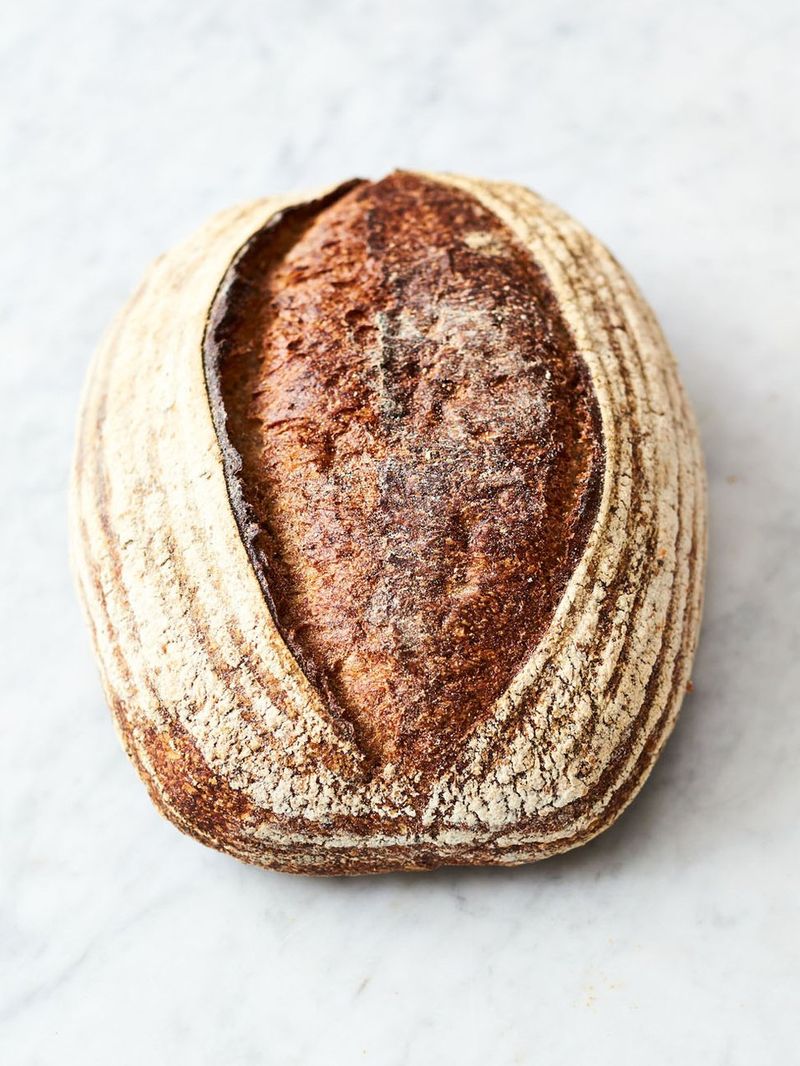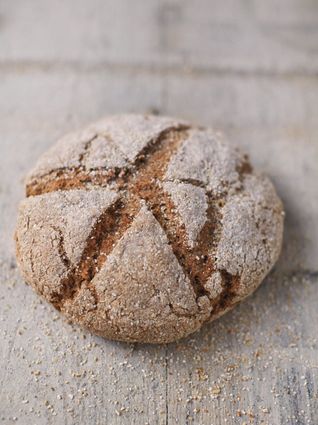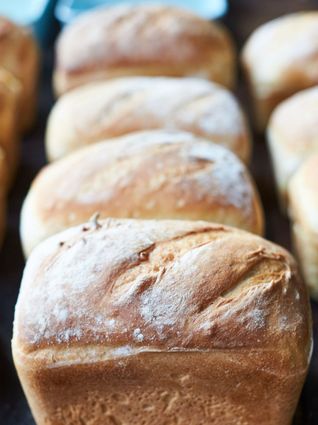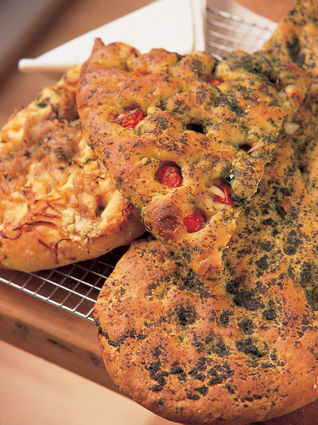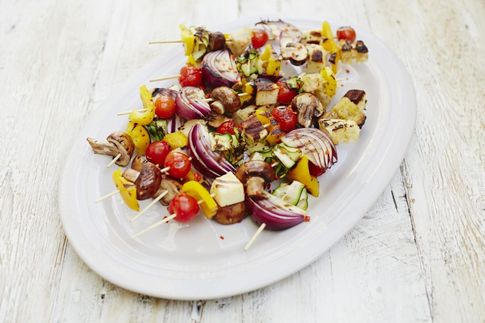Sourdough bread
How to make the perfect loaf
Sourdough bread
How to make the perfect loaf
“Making your own sourdough takes a bit of prep and know-how, but once you’ve got the knack and start developing your instincts, you’ll be hooked!
”
Makes 1 loaf
Cooks In50 minutes plus proving and fermentation
DifficultyNot too tricky
Nutrition per serving
-
Calories 160 8%
-
Fat 0.7g 1%
-
Saturates 0.2g 1%
-
Sugars 0.7g 1%
-
Salt 0.9g 15%
-
Protein 5.5g 11%
-
Carbs 34.8g 13%
-
Fibre 2.2g -
Of an adult's reference intake
Tap For Method
Ingredients
- Levain starter
- 50 g mature sourdough starter
- 50 g strong white bread flour
- Final dough
- 100 g levain starter
- 400 g organic strong white bread flour
- 100 g organic whole wheat flour
- ½ tablespoon fine salt
- fine semolina flour , for dusting
- semolina , for dusting
Tap For Method
The cost per serving below is generated by Whisk.com and is based on costs in individual supermarkets. For more information about how we calculate costs per serving read our FAQS
Tap For Ingredients
Method
- The night before you want to bake, make the levain starter. Pour 50ml of tepid water into a large mixing bowl. Use your fingers to gently stir in the mature sourdough starter until fully dissolved, then repeat with the flour until smooth and combined.
- Leave, covered, in a warm place for at least 8 hours – it’s ready when lots of bubbles appear on the surface and the dough has a milky-sweet aroma.
- The next day, to make the final dough, pour 325ml of tepid water into a large mixing bowl and add 100g of the levain, which should float (the remaining levain can be fed and used as a new sourdough starter, or gifted to a friend). Use your fingers to gently stir it into the water until fully dissolved, then repeat with both flours. Cover with a damp cloth and rest in a warm place for 1 hour.
- Now add the salt and 25ml of tepid water, scrunching them into the dough until fully combined. Set aside, covered, in a warm place for 30 minutes.
- Wet your hand slightly and give the dough four folds in the bowl, one at each ‘corner’. This is one turn. Repeat this process another three times at 30-minute intervals, turning the dough four times in total across 2 hours. After the last turn, cover and leave to rise in a warm place for another 2 hours.
- To shape the loaf, tip the dough onto a clean surface and gently dust the top with a handful of semolina flour. Roughly shape into a round, being careful to keep as much air in the dough as possible. Rest, covered, for 30 minutes.
- Dust a basket or cane banneton with semolina flour (or you can simply use a medium bowl lined with a clean, floured tea towel). Lightly flour the dough again and flip it over, so the flour side is on the worktop. Set the dough in front of you and gently shape into a round. Turn the dough over, then place it in your floured basket, banneton or tea towel-lined bowl.
- Cover the dough with a shower cap (or oiled cling film) and allow to rest for 1 to 2 hours, or until increased in size by a quarter and looking bubbly. Transfer your dough, in its basket or bowl, to the fridge to rise for another 12 to 16 hours, or until bubbly and risen by another quarter.
- Place a heavy lidded casserole pot on the bottom shelf of the oven, then preheat to full whack (240ºC/464ºF/gas 9).
- Bring your loaf out of the fridge and scatter semolina over the top. Working carefully, remove the hot pot from the oven, take off the lid and gently tip your dough out into the pot, so now the pattern should be the right way up. Score it with a sharp knife, holding it at a 40 degree angle to the surface of the dough for the best slashes, then carefully cover and return to the oven.
- Reduce the temperature to 230ºC/446ºF/gas 8 and bake for 30 minutes. Carefully remove the lid and bake for a final 20 minutes, or until a malted golden brown. Remove to a wire rack to cool.
Related recipes
© 2024 Jamie Oliver Enterprises Limited
© 2024 Jamie Oliver Enterprises Limited
